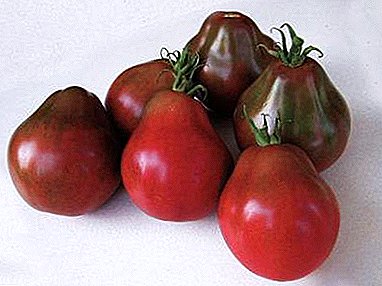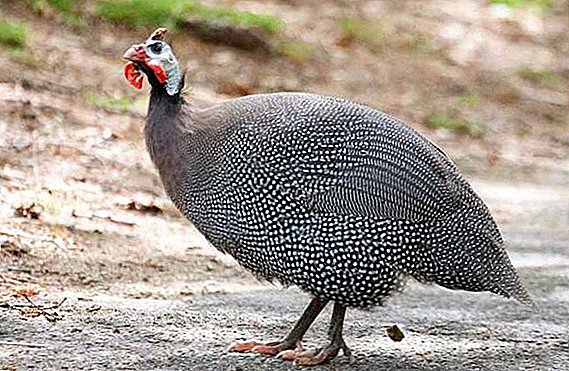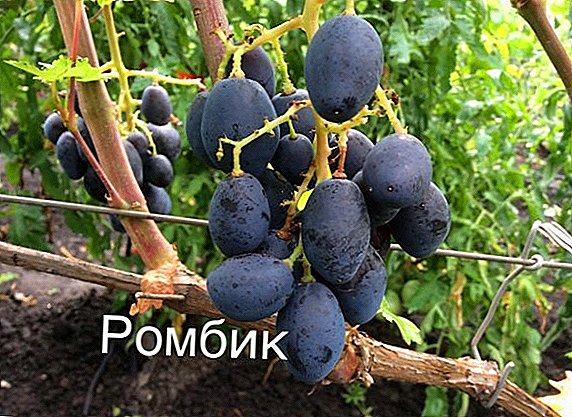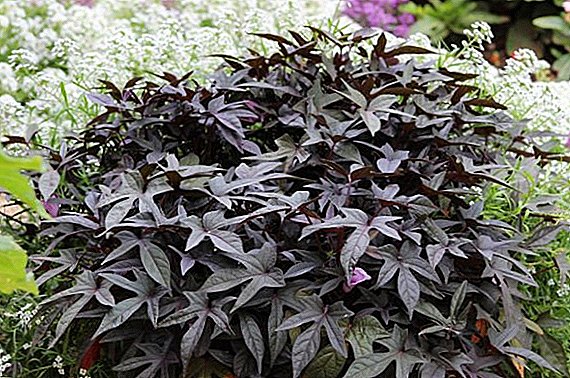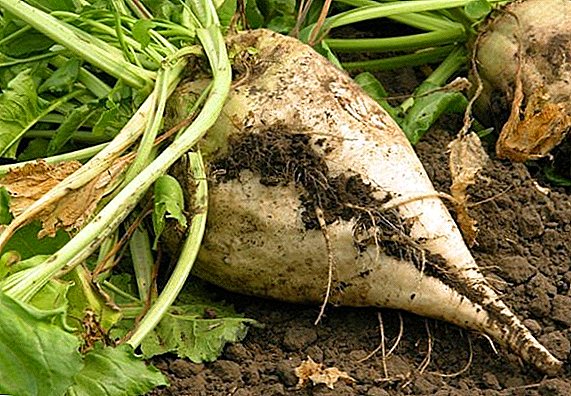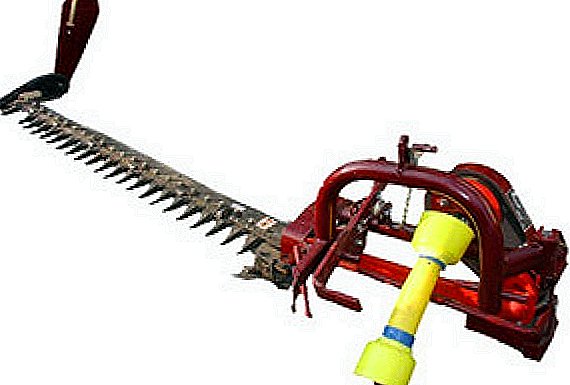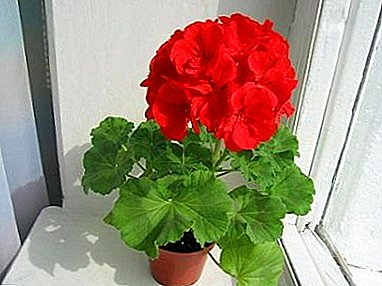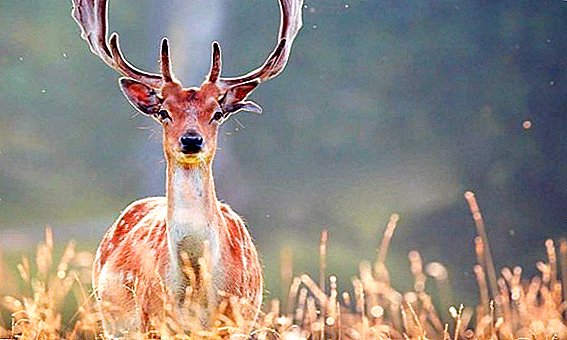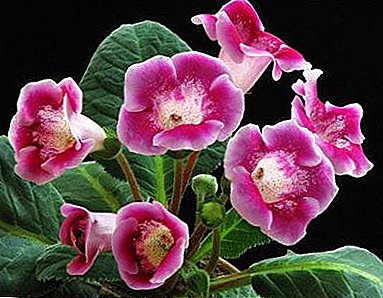
Gloxinia is able to simultaneously open a couple of dozen bright colors, gramophones. However, not every owner of this plant can boast such results.
Buds appear on gloxinia only as a result of proper care. In the article you can find out how often to water indoor plants, which blooms with bells.
And also what to feed for abundant flowering, is it possible to cut the leaves during the appearance of buds, how to prepare the plant for rest. Care at home, the nuances of watering and trimming the leaves.
Why the plant does not release buds, consider the possible causes of gloxinia diseases and treatment options.
All about bloom
When does this happen?
Gloxinia usually blooms once or twice a year.. In good conditions, the flowering period begins in mid-spring - early summer.
How long?
If the first flowering was not too late, the plant can give a second wave of bud development. The total flowering time is six to seven months with a short break. The flower lasts seven to ten days. The second bloom is less abundant than the first.
When will bloom grown from a leaf?
It is possible to see the bloom of gloxinia grown from a leaf after about four months.. Only the time the tuber is formed. If the leaf rooted in the spring, the flowers will appear in the fall. Flowering will be modest and short. If the plant perezimuet correctly, next spring it will appear in all its glory.
How to grow gloxinia from a leaf, we told here.
How to make release the buds?
Buds on gloxinia appear only with proper care.
What to feed?
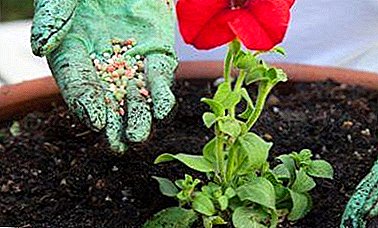 In March, prepare fresh ground for begonia, adding magnesium sulfate and ammonium nitrate to it: 0.5 g per 1 kg of the substrate. Plant a tuber in a new soil.
In March, prepare fresh ground for begonia, adding magnesium sulfate and ammonium nitrate to it: 0.5 g per 1 kg of the substrate. Plant a tuber in a new soil.- After one and a half - two months after planting, apply the first feed with a solution of complete mineral fertilizer containing nitrogen. Vito, Uniflor-growth, Uniflor-green leaf or Riga mix are suitable. Add an hour after the main irrigation, at the edges of the pot. Do not allow the solution to fall on the leaves and at the point of growth. After the procedure, the plant should not be in the sun.
It is better to apply fertilizer in the evening or in cloudy weather. Strictly comply with the dosage. Excess nitrogen leads to the active development of green mass at the expense of flowering, and also provokes root rot.
Nitrogen fertilizers should be given only at the beginning of growth, until the buds appear. - Begonia needs to be fed every two weeks, alternating full mineral fertilizers with organic ones. You can buy a ready-made organic fertilizer or use fermented bird droppings: 250 ml of a concentrated solution per liter of water. Allowed to carry out procedures every ten days, but with a weaker concentration of the solution.
- When the buds seem organic alternate with phosphate-potassium mineral fertilizers, which enhance flowering. You can take Uniflor-flower or Uniflor-bud. Avoid oversupply of phosphate fertilizers, otherwise flowering will be abundant, but short.
- When flowering is complete, hold two fertilizers potash phosphate fertilizer with an interval of two weeks. This will help the tuber to recover and prepare for a rest period. During winter holidays and for the first time after waking up, top dressing is not required.
How much light and heat does a house need to grow?
- After planting the tuber to create the effect of a greenhouse, covering it at night with a glass jar.
- When leaves appear, remove the greenhouse. Put gloxinia on the lighted place. The stem will be shorter, many buds will be formed, the flowers will be bright. You can arrange additional lighting - include special lamps for 10 - 12 hours. Maintain temperature from +23 to + 25 ° C.
- When buds appear, move the plant pot to a less lighted and cooler place with an air temperature of +18 to + 20 ° C. Do not allow direct sunlight to reach the gloxinia. Increase humidity, but not by spraying. Put the pot on a tray with wet clay or moss. Keep the plant from drafts.
When and how to send on vacation?
 Adult gloxinia requires an annual rest period:
Adult gloxinia requires an annual rest period:
- In September - October, gradually reduce watering.
- When the leaves begin to turn yellow or dry, completely stop moistening the soil.
- After the death of the aerial parts of the plant, keep the tuber at rest for three to four months.
Storage methods:
- Place the tuber pot in a cool place with a temperature of +10 to + 15 ° C. Ensure that the tuber does not dry out completely and does not wrinkle strongly. Lightly moisten the soil several times during the rest period.
- Two weeks after the complete extinction of the above-ground part, dig up the tuber. Peel off residues. Place in slightly wet sawdust or sand. Keep cool. The middle or lower shelf of the refrigerator door will do. Every month to get and inspect the tuber. If the substrate is completely dry, slightly moisten, and return the tuber to it. Do not overmoist the soil.
How to care for gloxinia after it has blossomed, read in a separate article.
Video about gloxinia dormancy period and tuber storage:
How to cause reappearance?
In May or June, after the first flowering, carefully examine the gloxinia. If there is a point of growth, after a while the plant will again delight with buds. If there is no growth point, trim will help:
- Cut off the aerial part, leaving an escape height of two centimeters from the soil surface and two - four lower leaves.
- When the side shoots begin to grow, pinch off the weak ones and leave one or two of the strongest ones.
- Add nitrogen fertilizer to stimulate the growth of stems and leaves.
- In a month, the process of bud formation begins. Replace nitrogen fertilizers with phosphorus-potassium complex.
If the flowering plant continues until the end of summer, it is not necessary to cut it. Gloxinia may not have the strength to the second bloom. It is better to allow her to prepare for the winter.
Home care
Errors made in the maintenance of the plant, significantly reduce the quality and duration of flowering.
How often to water?
During the flowering period requires intensive watering.. The soil is moistened when the top layer dries. Watering requires soft, filtered or settled water for a couple of days. Its temperature should be two to three degrees above the air temperature in the room.
Watered through the pan. So water does not fall on the tuber, leaves and buds. After some time, be sure to drain the excess moisture. In the second half of August, the frequency of irrigation gradually reduced.
Is it possible to cut the leaves?
If you need to get material for breeding gloxinia, you can cut a sheet of blooming gloxinia. Allowed to remove damaged or wilted leaves.. Full pruning can not be carried out, it will cause the loss of existing flowers and stop flowering.
Video about the care of the flower at home:
Why there are no buds: causes and diseases and what to do
- Old tuber. Requires more abundant watering. You can take care of reproduction in order to get a young plant from this gloxinia.
- Infections that hit the tuber. Remove the tuber from the ground. Treat with fungicides. You can dip a tuber in a weak solution of potassium permanganate for half an hour. To dry Prepare a new pot and fresh substrate. Sanitized soil: calcined in the oven for half an hour. Let it cool. You can use the drug Maxim: one ampoule per two liters of water. Plant a tuber in a new land.
- Pest infestation. Treat the plant and the substrate itself with systemic insecticides.
- Lack of light at high air temperatures. Gloxinia is strongly drawn out, becomes thin and weak. Find a bright and warm place for the flower in the house. The lack of light is compensated by fluorescent lamps.
In the heating season, clean the gloxinia away from hot radiators.
- Unbalanced fertilizer input: use of inappropriate formulations, deficiency of certain nutrients, fertilizer oversupply. A sign of an excess of nitrogen are thick stems and a large number of new leaves of dark green color. It is necessary to transplant gloxinia in the soil containing a lot of peat. Choose only the right fertilizer and adjust the schedule of fertilizing. Observe the dosage indicated on the product packaging.
- Unsuitable temperature setting. Under conditions of high temperature, the tuber is very hot. Gloxinia stops its development, the leaves become sluggish. Rearrange the plant in a shaded place, if necessary, organizing the backlight. Temperatures below + 18 ° C during the growing season slows down plant growth. Roots overcool and rot, leaves turn black. You need to choose a warmer place for gloxinia.
- Air humidity too low. The leaves turn yellow, curled into tubes (for possible diseases of the leaves of the Gloxinia, see here). Spray from the spray air around the plant, preventing moisture on the leaves and stems. Place the pot with gloxinia on the tray with wet pebbles.
- Overly large pot. Gloxinia spends all its strength on the growth of the tuber. Plant the plant in a shallow and wide pot (how to choose the right pot, described in this material).
 Why the plant does not release buds or flowers appear, which then dry up?
Why the plant does not release buds or flowers appear, which then dry up?Gloxinia care is a process that requires a lot of attention and effort. At each stage of development it is necessary to create optimal conditions for the plant. If everything is done correctly, gloxinia will bloom profusely all summer with a short break.


 In March, prepare fresh ground for begonia, adding magnesium sulfate and ammonium nitrate to it: 0.5 g per 1 kg of the substrate. Plant a tuber in a new soil.
In March, prepare fresh ground for begonia, adding magnesium sulfate and ammonium nitrate to it: 0.5 g per 1 kg of the substrate. Plant a tuber in a new soil.